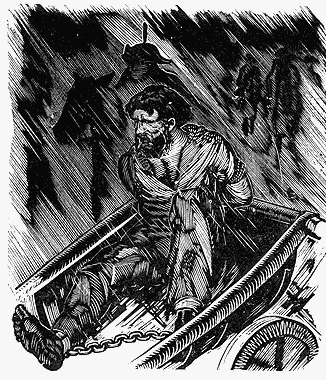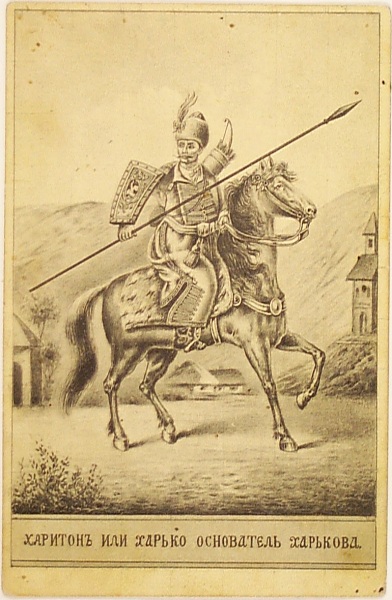|
Russian Futurist
Russian Futurism is the broad term for a movement of Russian poets and artists who adopted the principles of Filippo Marinetti's "Manifesto of Futurism," which espoused the rejection of the past, and a celebration of speed, machinery, violence, youth, industry, destruction of academies, museums, and urbanism; it also advocated the modernization and cultural rejuvenation. Russian Futurism began roughly in the early 1910s; in 1912, a year after Ego-Futurism began, the literary group "Hylea" - also spelt "Guilée" and "Gylea" – issued the manifesto ''A Slap in the Face of Public Taste''. The 1912 movement was originally called Cubo-Futurism, but this term is now used to refer to the style of art produced. Russian Futurism ended shortly after the Russian Revolution of 1917, after which former Russian Futurists either left the country, or participated in the new art movements. Notable Russian Futurists included Natalia Goncharova, Mikhail Larionov, David Burliuk, Kazimir Malevich, ... [...More Info...] [...Related Items...] OR: [Wikipedia] [Google] [Baidu] |
Vasily Kamensky
Vasily Vasilyevich Kamensky (russian: Васи́лий Васи́льевич Каме́нский; – November 11, 1961) was a Russian Futurist poet, playwright, and artist as well as one of the first Russian aviators. Biography Kamensky was born in Perm, where his father was an inspector of goldfields. (The story that he was born on a boat on the Kama River, which he himself promoted and recounts in his memoirs, is untrue.) He lost his parents at the age of five and went to live in Perm with his aunt, whose husband piloted steam tugs on the river; he later wrote "My whole childhood took place in a house on the Kama wharf among tugs, barges, rafts, boats, stevedores, sailors, bargees, captains..." He left school in 1900, and from 1902 to 1906 worked as a railroad clerk. In 1904 he began to contribute to the newspaper ''Permskii Krai'', publishing poems and notices; at the newspaper he met local Marxists and developed his own leftist political orientation. At this time he als ... [...More Info...] [...Related Items...] OR: [Wikipedia] [Google] [Baidu] |
Futurism
Futurism ( it, Futurismo, link=no) was an artistic and social movement that originated in Italy, and to a lesser extent in other countries, in the early 20th century. It emphasized dynamism, speed, technology, youth, violence, and objects such as the car, the airplane, and the industrial city. Its key figures included the Italians Filippo Tommaso Marinetti, Umberto Boccioni, Carlo Carrà, Fortunato Depero, Gino Severini, Giacomo Balla, and Luigi Russolo. Italian Futurism glorified modernity and according to its doctrine, aimed to liberate Italy from the weight of its past. Important Futurist works included Marinetti's 1909 ''Manifesto of Futurism'', Boccioni's 1913 sculpture ''Unique Forms of Continuity in Space'', Balla's 1913–1914 painting '' Abstract Speed + Sound'', and Russolo's ''The Art of Noises'' (1913). Although Futurism was largely an Italian phenomenon, parallel movements emerged in Russia, where some Russian Futurists would later go on to found groups of their o ... [...More Info...] [...Related Items...] OR: [Wikipedia] [Google] [Baidu] |
Cubism
Cubism is an early-20th-century avant-garde art movement that revolutionized European painting and sculpture, and inspired related movements in music, literature and architecture. In Cubist artwork, objects are analyzed, broken up and reassembled in an abstracted form—instead of depicting objects from a single viewpoint, the artist depicts the subject from a multitude of viewpoints to represent the subject in a greater context. Cubism has been considered the most influential art movement of the 20th century. The term is broadly used in association with a wide variety of art produced in Paris (Montmartre and Montparnasse) or near Paris ( Puteaux) during the 1910s and throughout the 1920s. The movement was pioneered by Pablo Picasso and Georges Braque, and joined by Jean Metzinger, Albert Gleizes, Robert Delaunay, Henri Le Fauconnier, Juan Gris, and Fernand Léger. One primary influence that led to Cubism was the representation of three-dimensional form in the late works of Pau ... [...More Info...] [...Related Items...] OR: [Wikipedia] [Google] [Baidu] |
United States
The United States of America (U.S.A. or USA), commonly known as the United States (U.S. or US) or America, is a country primarily located in North America. It consists of 50 states, a federal district, five major unincorporated territories, nine Minor Outlying Islands, and 326 Indian reservations. The United States is also in free association with three Pacific Island sovereign states: the Federated States of Micronesia, the Marshall Islands, and the Republic of Palau. It is the world's third-largest country by both land and total area. It shares land borders with Canada to its north and with Mexico to its south and has maritime borders with the Bahamas, Cuba, Russia, and other nations. With a population of over 333 million, it is the most populous country in the Americas and the third most populous in the world. The national capital of the United States is Washington, D.C. and its most populous city and principal financial center is New York City. Paleo-Americ ... [...More Info...] [...Related Items...] OR: [Wikipedia] [Google] [Baidu] |
Europe
Europe is a large peninsula conventionally considered a continent in its own right because of its great physical size and the weight of its history and traditions. Europe is also considered a Continent#Subcontinents, subcontinent of Eurasia and it is located entirely in the Northern Hemisphere and mostly in the Eastern Hemisphere. Comprising the westernmost peninsulas of Eurasia, it shares the continental landmass of Afro-Eurasia with both Africa and Asia. It is bordered by the Arctic Ocean to the north, the Atlantic Ocean to the west, the Mediterranean Sea to the south and Asia to the east. Europe is commonly considered to be Boundaries between the continents of Earth#Asia and Europe, separated from Asia by the drainage divide, watershed of the Ural Mountains, the Ural (river), Ural River, the Caspian Sea, the Greater Caucasus, the Black Sea and the waterways of the Turkish Straits. "Europe" (pp. 68–69); "Asia" (pp. 90–91): "A commonly accepted division between Asia and E ... [...More Info...] [...Related Items...] OR: [Wikipedia] [Google] [Baidu] |
Odessa
Odesa (also spelled Odessa) is the third most populous city and municipality in Ukraine and a major seaport and transport hub located in the south-west of the country, on the northwestern shore of the Black Sea. The city is also the administrative centre of the Odesa Raion and Odesa Oblast, as well as a multiethnic cultural centre. As of January 2021 Odesa's population was approximately In classical antiquity a large Greek settlement existed at its location. The first chronicle mention of the Slavic settlement-port of Kotsiubijiv, which was part of the Grand Duchy of Lithuania, dates back to 1415, when a ship was sent from here to Constantinople by sea. After a period of Lithuanian Grand Duchy control, the port and its surroundings became part of the domain of the Ottomans in 1529, under the name Hacibey, and remained there until the empire's defeat in the Russo-Turkish War of 1792. In 1794, the modern city of Odesa was founded by a decree of the Russian empress Catherine t ... [...More Info...] [...Related Items...] OR: [Wikipedia] [Google] [Baidu] |
Kharkiv
Kharkiv ( uk, wikt:Харків, Ха́рків, ), also known as Kharkov (russian: Харькoв, ), is the second-largest List of cities in Ukraine, city and List of hromadas of Ukraine, municipality in Ukraine.Kharkiv "never had eastern-western conflicts" ''Euronews'' (23 October 2014) Located in the northeast of the country, it is the largest city of the historic Sloboda Ukraine, Slobozhanshchyna region. Kharkiv is the administrative centre of Kharkiv Oblast and of the surrounding Kharkiv Raion. The latest population is Kharkiv was founded in 1654 as Kharkiv fortress, and after these humble beginnings, it grew to be a major centre of industry, trade and Ukrainian culture in the Russian Empire. At the beginning of the 20th century, ... [...More Info...] [...Related Items...] OR: [Wikipedia] [Google] [Baidu] |
Kiev
Kyiv, also spelled Kiev, is the capital and most populous city of Ukraine. It is in north-central Ukraine along the Dnieper, Dnieper River. As of 1 January 2021, its population was 2,962,180, making Kyiv the List of European cities by population within city limits, seventh-most populous city in Europe. Kyiv is an important industrial, scientific, educational, and cultural center in Eastern Europe. It is home to many High tech, high-tech industries, higher education institutions, and historical landmarks. The city has an extensive system of Transport in Kyiv, public transport and infrastructure, including the Kyiv Metro. The city's name is said to derive from the name of Kyi, one of its four legendary founders. During History of Kyiv, its history, Kyiv, one of the oldest cities in Eastern Europe, passed through several stages of prominence and obscurity. The city probably existed as a commercial center as early as the 5th century. A Slavs, Slavic settlement on the great trade ... [...More Info...] [...Related Items...] OR: [Wikipedia] [Google] [Baidu] |
Boris Pasternak
Boris Leonidovich Pasternak (; rus, Бори́с Леони́дович Пастерна́к, p=bɐˈrʲis lʲɪɐˈnʲidəvʲɪtɕ pəstɛrˈnak; 30 May 1960) was a Russian poet, novelist, composer and literary translator. Composed in 1917, Pasternak's first book of poems, ''My Sister, Life'', was published in Berlin in 1922 and soon became an important collection in the Russian language. Pasternak's translations of stage plays by Goethe, Schiller, Calderón de la Barca and Shakespeare remain very popular with Russian audiences. Pasternak is the author of ''Doctor Zhivago'' (1957), a novel that takes place between the Russian Revolution of 1905 and the Second World War. ''Doctor Zhivago'' was rejected for publication in the USSR, but the manuscript was smuggled to Italy and was first published there in 1957. Pasternak was awarded the Nobel Prize in Literature in 1958, an event that enraged the Communist Party of the Soviet Union, which forced him to decline the prize. In 198 ... [...More Info...] [...Related Items...] OR: [Wikipedia] [Google] [Baidu] |
Ego-Futurist
Ego-Futurism was a Russian literary movement of the 1910s, developed within Russian Futurism by Igor Severyanin and his early followers. While part of the Russian Futurism movement, it was distinguished from the Moscow-based cubo-futurists as it was associated with poets and artists active in Saint Petersburg. Background In 1909, the Italian poet Filippo Tommaso Marinetti began the Futurist movement by publishing the ''Manifesto of Futurism''; it called for a total break with the past, in favour of a completely modern world. Very quickly he gained numerous followers, such as the painter Umberto Boccioni, and the musician Luigi Russolo. In 1910, Marinetti went to Russia to lecture on his ideas; it was this year that one of the earliest Russian Futurist groups began: led by David and Wladimir Burliuk, it was called 'Hylea', and its members included poets who would later become Cubo-Futurists, the rivals of the Ego-Futurists. Igor Severyanin, the founder of Ego-Futurism, was already ... [...More Info...] [...Related Items...] OR: [Wikipedia] [Google] [Baidu] |
Igor Severyanin
Igor Severyanin (russian: И́горь Северя́нин; pen name, real name Igor Vasilyevich Lotaryov: И́горь Васи́льевич Лотарёв; May 16, 1887 – December 20, 1941) was a Russian poet who presided over the circle of the so-called Ego-Futurists. Igor was born in St. Petersburg in the family of an army engineer. Through his mother, he was remotely related to Nikolai Karamzin and Afanasy Fet. In 1904 he left for Harbin with his father but later returned to St. Petersburg to publish first poems at his own expense. It was not until 1913 that, in the words of D.S. Mirsky, "the moment came when vulgarity claimed a place on Parnassus and issued its declaration of rights in the verse of Igor Severyanin". That year, Severyanin (his pen name means "Northerner" in Russian) brought out a collection entitled ''The Cup of Thunder'' (''Громокипящий кубок''), with a preface written by Fyodor Sologub. In one of his most celebrated poems, Lotaryov ... [...More Info...] [...Related Items...] OR: [Wikipedia] [Google] [Baidu] |






.jpg)


